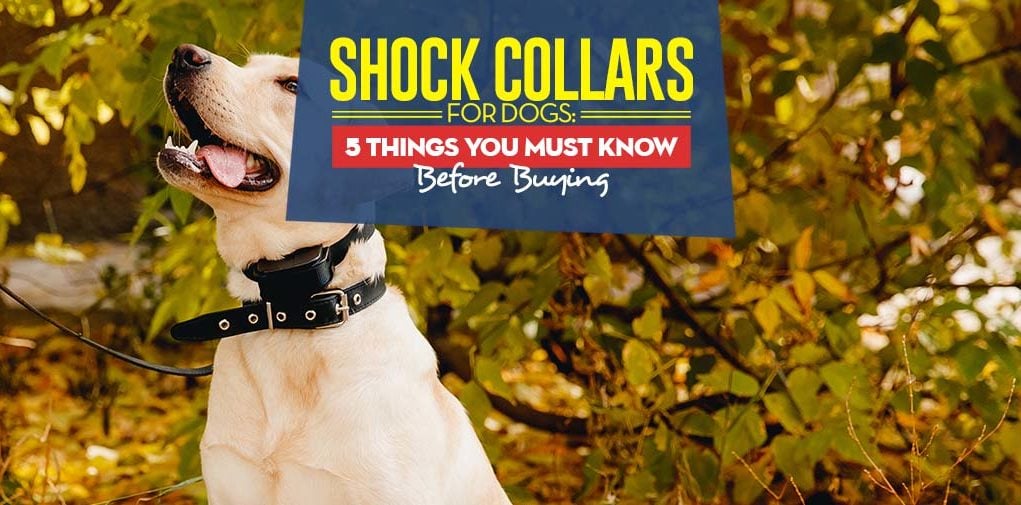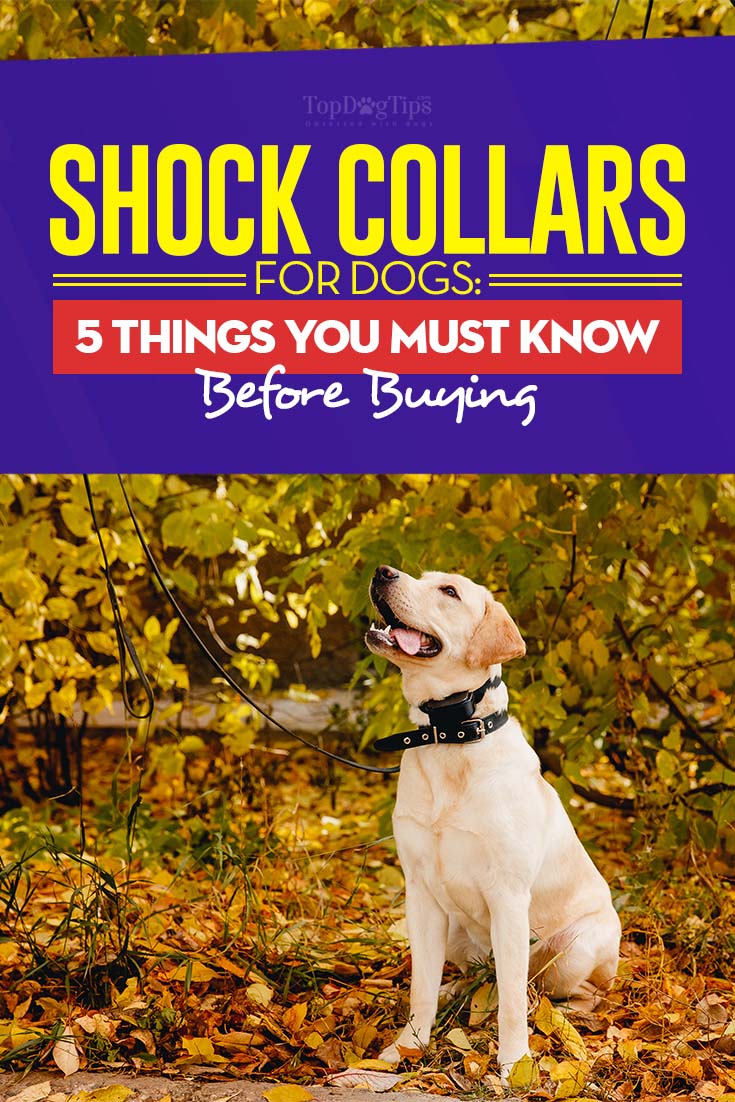Whether or not to use a shock collar is one of the most hotly debated topics among dog owners. Some dog owners feel that dog shock collars or e-collars are the best way to train dogs out of destructive behavior, while others feel that using a shock collar for dogs is a cruel and barbaric punishment for dogs.
As with many hot button topics the truth lies somewhere in the middle of the emotional arguments on both sides. When shock collars are used too often, or with too much intensity, they can hurt the dog. But, when they are used correctly they can train dogs out of dangerous and destructive behaviors.
Using a dog shock collar might seem like an extreme measure, but some dogs need extra training to adapt their behavior to their environment. A dog that barks all the time in an apartment can cause problems for the owners and might even end up getting re-homed or put in a shelter because of that barking behavior. If a shock collar can train the dog to stop barking so that the owners can keep the dog in their home everyone wins.
EXPERT INTERVIEW: Training Dogs with Electronic Shock Collars
Shock Collar for Dogs
5 things you MUST know before buying shock collars
How Does A Shock Collar Work?
A shock collar for dogs is a collar that is fitted with an electronic device and two small prongs. Those prongs deliver a small shock to the dog’s neck when the dog is doing something destructive or dangerous.
Shock collars also are used to set boundaries for a dog. When a dog barks too much, for example, or goes across the property line it gets a small shock to let it know that that behavior is going to result in a shock.
High quality shock collars emit a beep or some other sound before delivering the shock. Eventually the dog learns to associate the beep with the shock. When the dog hears the beep it will stop the behavior in order to avoid a shock.
High quality collars also come with the ability to vary the intensity of the shock. That way owners or trainers can use the lightest shock necessary to get the dog’s attention. Here are a few other things you need to know about shock collars before using one:
1. They’re Not All The Same
When it comes to dog shock collars there is a dramatic difference in the types of collars available. Lower quality cheap collars are more likely to hurt the dog. They also don’t have the capabilities that are needed to effectively train the dog.
When you’re buying a shock collar, the quality matters a great deal. This is not something that you want to skimp on to save money. Do some research and look for a collar that is recommended by both other owners and dog trainers.
REVIEW: EliteField Dog Training Collar Review
2. They Are A Last Resort
Shock collars should never be used lightly. Dog owners should try using positive punishment and reward first to change the dog’s behavior. But, some dogs don’t learn through positive reinforcement.
If a dog is routinely running off the property into traffic, or barking incessantly or being aggressive with other dogs in the house about food, those behaviors could result in injuries or even death for the dog or other pets. A shock collar for dogs is just one of many training tools that dog owners can use, and they should be considered a last resort.
3. They Can Be Effective
There’s a reason why shock collars have been used to train hunting and working dogs for decades. They work! Some dogs won’t respond to any other type of training tool and will only respond well to a shock collar.
When they are used carefully, and used the way the way they are made to be used, they are an effective training tool that can work on dogs that don’t respond to other training methods. A shock collar for dogs can be an excellent training when used in a safe and humane fashion.
4. They Work Best Combined With Positive Reinforcement
 Combining the use of a shock collar with positive reinforcement and training is the best way to make sure that the dog learns what behavior is acceptable without destroying the owner’s relationship with the dog. Using a shock collar sends the dog a message to stop a behavior.
Combining the use of a shock collar with positive reinforcement and training is the best way to make sure that the dog learns what behavior is acceptable without destroying the owner’s relationship with the dog. Using a shock collar sends the dog a message to stop a behavior.
Then positive reinforcement rewards the dog for stopping that behavior. And so the dog learns it can avoid the shock and get love, praise and possibly treats for not engaging in that behavior. Prioritizing this type of positive reinforcement training over electronic dog collars is always recommended.
5. Professional Dog Trainers Use Them
Dog training professionals and dog behavior specialists do use shock collars. But, they know how to use them the right way. It’s critically important that shock collars are used correctly in order to avoid hurting the dog and to correct the dog’s behavior.
A professional trainer or behaviorist can decide whether or not a shock collar will be an effective training tool for your dog based on your dog’s history and behavior. If you’re not sure whether or not you want to use a shock collar on your dog talk to a professional. They will be able to assess what’s right for your dog.
RELATED: The Science-based Guide to Dog Shock Collars – What You Must Know
The Bottom Line
The bottom line when it comes to using shock collars is that they do work and they can work quite well. But that doesn’t mean that a cheap shock collar from a farm supply store or discount big box store is going to be safe and effective for your dog.
Like any training tool you need to know how to use it properly and you should not use a shock collar unless your dog doesn’t respond to other types of training.
If your dog is exhibiting behavioral problems that are causing you and the dog a lot of distress the best thing that you can do is get your dog evaluated by a professional trainer or behaviorist. If they recommend using a shock collar they can recommend what type of collar to use and teach you how to use it. That way you can train your dog out of the behavior without causing unnecessary paint or stress to your dog.
READ NEXT: Dog Shock Collar Controversy – What Do the Experts Say?
















